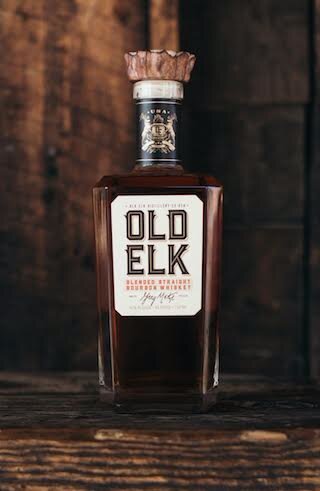 I was about to casually add a product to the New Booze page when I realized I didn't know what it was: Old Elk Blended Straight Bourbon Whiskey.
I was about to casually add a product to the New Booze page when I realized I didn't know what it was: Old Elk Blended Straight Bourbon Whiskey.
I thought that "blended" and "straight" whiskey were at odds with each other, as blended whiskeys must contain at least 20% straight whiskeys in their blend.
The press release doesn't address what is a blended straight bourbon is in the description:
With four times more malted barley than conventional recipes and a slow cut proofing process which allows more time for flavors to marry between proofing stages, the Old Elk Bourbon recipe transcends tradition to craft a rich, smooth bourbon.
“We use traditional ingredients – malted barley, corn and rye – in an innovative, yet steadfast recipe to create a bourbon with smooth, rich flavors that act in harmony with caramel cues brought out by the charred barrels and spicy rye notes,” said Greg Metze, Master Distiller at Old Elk Distillery. “After testing a variety of proofing periods, we found that these flavors come together in a smoother bourbon when the proofing stages are longer. Instead of taking the usual 24 to 48 hours for proofing, we use a slow cut proofing process during which full-barrel proof bourbon is cut and left to rest – and we repeat this patient technique until the ideal character is achieved. It takes significantly longer than most common recipes, but taking the time to proof slowly makes all the difference.”
(SRP $49.99), now available in Colorado and California
So I looked it up.
According to the US Government:
(5)(i) ‘‘A blend of straight whiskies’’
(blended straight whiskies) is a mixture
of straight whiskies which does
not conform to the standard of identify
for ‘‘straight whisky.’’ Products so designated
may contain harmless coloring,
flavoring, or blending materials as
set forth in 27 CFR 5.23(a).
(ii) ‘‘A blend of straight whiskies’’
(blended straight whiskies) consisting
entirely of one of the types of straight
whisky, and not conforming to the
standard for straight whisky, shall be
further designated by that specific type
of straight whisky; for example, ‘‘a
blend of straight rye whiskies’’ (blended
straight rye whiskies). ‘‘A blend of
straight whiskies’’ consisting entirely
of one of the types of straight whisky
shall include straight whisky of the
same type which was produced in the
same State or by the same proprietor
within the same State, provided that
such whisky contains harmless coloring,
flavoring, or blending materials as
stated in 27 CFR 5.23(a).
So a blended straight bourbon whiskey like this is a blend of straight bourbons that may contain coloring, flavoring, or blending materials.
Update: A PR representative for the brand clarified that although Old Elk could legally use additives in its formulation according to the whiskey category it is in, they do not. They wrote:
Long story short:
- Old Elk Bourbon conforms to Section 2 Grain Spirits (1)(i) Bourbon Whisky
- Old Elk Bourbon also conforms to Section 2 Grain Spirits (1)(iii) as a “Straight Bourbon Whisky” except that it is a blend of straight bourbon whiskies from other states, not the same state.
- Therefore, Old Elk Bourbon is relegated to Section 5 (ii) “A Blend of Straight Bourbon Whiskies” which allows the use of coloring, flavoring or blending materials but does not mandate it.
Old Elk Bourbon does not use additives, but still falls under the “Straight Bourbon Whiskey” designation since the bourbon whiskies used in the blend were produced in three different states (Colorado, New York and Indiana). They do plan to change that, as they’re expanding their distillery in Colorado.